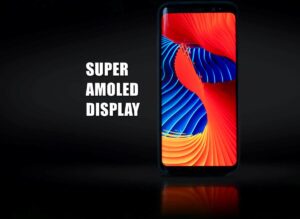Mobile phone screen technology has evolved better since the arrival of OLED panels. And now it has replaced IPS LCD in the best mobile phone screen technology.
One of the derivatives of OLED technology is AMOLED, this display technology was developed by the Samsung company. Now you can find it on a variety of high-end smartphone devices. Not only specifically for Samsung phones, but also in other brand phones such as Xiaomi, Realme, Oppo, Vivo and others.
The AMOLED screen has a sibling, it’s called Super AMOLED. The display panel was issued as a replacement and successor to the AMOLED. With some improvement from the previous generation.
What is AMOLED
AMOLED screens are the best alternative to LCDs because they produce a more colorful display and produce higher black and white.
The manufacture of AMOLED screens is more complicated because there are many parts such as substrates, thin film transistor arrangements (TFT), organic color layers, and the top cathode layer, as well as the touch panel, the parts are separated by glass. Because of the separation, the screen becomes thicker and bigger, of course, it also makes the phone a little thicker.
Increasing the refresh rate to a higher level is also difficult to apply, because there are many layers to add. However, repairs can be done more easily, so as to save repair costs.
In addition, the AMOLED screen has a reflection rate of 50%, it is due to the large number of layers. Many layers also have the risk of being more flammable or commonly called burn-in.
What is a Super AMOLED Screen?
Super AMOLED is the best alternative after AMOLED screens because the colors are brighter and brighter. The problem is that the cost of making these panels is more expensive. But the Super AMOLED screen has several advantages, in addition to experiencing improved color quality, the screen is also lighter and thinner. Because all parts of the color pixel and touch sensor are combined into one layer.
Thanks to the touch sensor being one piece, the Super AMOLED Screen has a more responsive touch level. Not only that, but the lack of coating also makes the panel more resistant to burn-in, when compared to AMOLED screens.
Choosing and using a Super AMOLED sailing phone is very good and has many advantages.
Main Differences between AMOLED and Super AMOLED Screens
- The super AMOLED display can add higher refresh rates such as 120hz and 144hz.
AMOLED can actually also be but less effective because it has to add more extra layers. - The Super AMOLED screen is able to reduce the level of reflection or reflection of sunlight by up to 80%, due to its small layer.
Meanwhile, AMOLED is only 50%. - Super AMOLED technology is more resistant to burn-in risk.
While ordinary AMOLED has more burn-in risk, because it has a thicker and larger layer. - Super AMOLED repair is more difficult because the layers are collected into one layer.
While AMOLED is easier because the layers are different for the part. - The Super AMOLED screen is thinner and lighter because there are only two layers of glass lining its panel (top down).
All parts are uniformly spread out, while the AMOLED screen is thicker and larger because there is an extra layer.
Advantages of Super AMOLED
The above are a slight difference, as the following additions are the advantages that the Super AMOLED screen has over its predecessor:
- The screen is more responsive or sensitive.
- Less light reflection.
- The colors that come out are a little more vibrant, or more colorful – high gamut.
- It has a brightness level of 20% brighter.
- 20% less power consumption.
- The shape is thinner, lighter and flexible.
Conclusion of AMOLED vs Super AMOLED
AMOLED can be said to be a good phone screen (on it an IPS LCD), but it still has some drawbacks, so in its replacement Samsung upgraded again to Super AMOLED.
Super AMOLED technology adds a touch sensor (touchscreen) directly. This means that the feature to detect touch has been integrated into the screen (and has become a part of the screen pixels).
So that Super AMOLED is able to produce a very thin screen, responsive and has a wider color gamut. And don’t forget it also has a higher peak brightness, but in addition it is also more power efficient.






